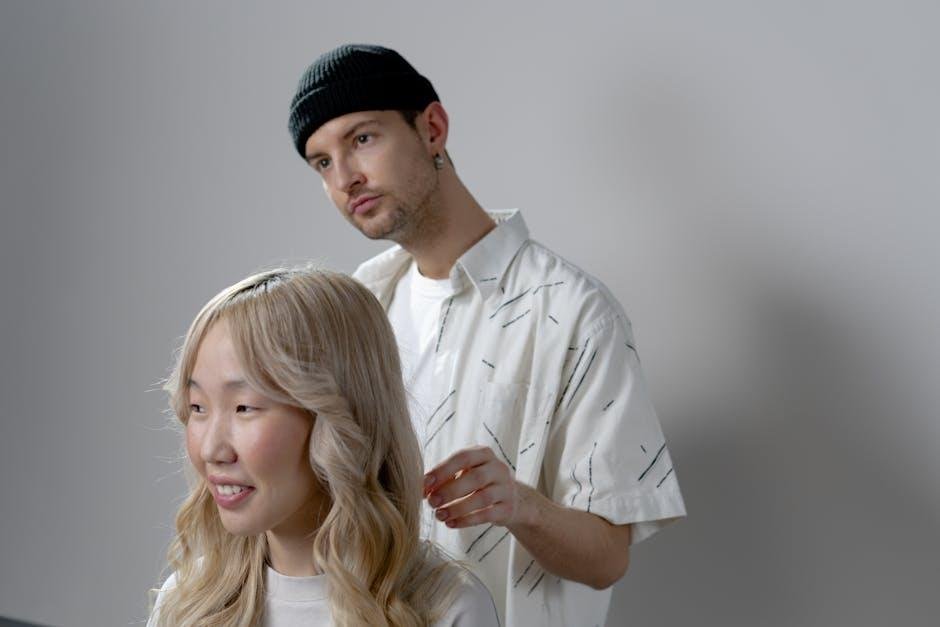Using Muzzles During Grooming: Yes or No?
Grooming is an essential part of pet care, ensuring our furry companions remain healthy and comfortable. However, for many pet owners, the prospect of grooming can evoke a mixture of excitement and anxiety, notably when dealing with animals that may be nervous, uncooperative, or even aggressive. In this context, the use of muzzles frequently enough arises as a topic of debate among pet professionals and owners alike. Do muzzles serve as a protective tool that enhances the grooming experience, offering both safety and reassurance, or do they introduce needless stress and discomfort for the pet? This article delves into the multifaceted world of grooming tools, exploring the pros and cons of using muzzles during grooming sessions, and providing insights to help pet owners make informed decisions in the best interest of their four-legged friends.
Evaluating Safety: The Role of Muzzles in Grooming Sessions
In the world of pet grooming, ensuring the safety of both the pet and the groomer is paramount. Muzzles can play an essential role in this dynamic, particularly for animals that may exhibit signs of anxiety or discomfort during grooming sessions. By securely fitting a muzzle, groomers can significantly reduce the risk of bites or scratches when handling dogs who are nervous about grooming tools, clippers, or the general grooming process. This practice not only protects the groomer but also prevents any unintended injury to the pet itself,allowing for a smoother and calmer experience.
nevertheless, it’s crucial to approach the use of muzzles with caution and understanding. A muzzle should never be perceived as a punitive measure; instead,it should be introduced positively. Hear are some considerations for implementing muzzles effectively during grooming:
- Choose the Right Type: Ensure that the muzzle is comfortable, well-fitted, and breathable.
- Acclimation is Key: Gradually introduce the muzzle to the pet to build familiarity and trust.
- Monitor Behavior: Observe the pet for any signs of distress while wearing the muzzle.
By following these guidelines, pet owners and groomers can create a safer habitat where grooming becomes a positive experience rather than a source of anxiety.

Understanding Your Dog’s Behavior: When Muzzles Are Beneficial
Understanding your dog’s behavior is crucial when considering the use of muzzles during grooming sessions. While many pet owners may feel uncertain about this tool, it’s critically important to recognize that a muzzle can serve several beneficial purposes. Safety is a top priority; a muzzle can protect groomers and other pets from an anxious or fearful dog who might react defensively. Calming effects are also observed in some dogs; the muzzle can act as a physical reminder for them to remain calm during possibly stressful situations like nail clipping or bathing.
When choosing the right muzzle, there are a few aspects to keep in mind to ensure it suits your dog’s needs:
- Fit: The muzzle should allow your dog to breathe freely and comfortably.
- Material: Opt for lightweight materials that won’t irritate your dog’s skin.
- Style: Basket muzzles are often preferred as they allow for panting and drinking.
- Duration: Limit the time your dog wears a muzzle to reduce stress.
Here’s a quick reference table summarizing the benefits of muzzles during grooming:
| Benefit | Description |
|---|---|
| Prevents Biting | Protects groomers and other animals from potential bites. |
| Reduced Anxiety | Can help some dogs feel more secure when in a muzzle. |
| Focus on Grooming | Helps dogs stay calm, allowing the groomer to work efficiently. |

Grooming Techniques to Minimize Muzzle Use
Minimizing muzzle use during grooming not only promotes a more comfortable experience for pets but also strengthens the trust between them and their groomers. To achieve this, consider implementing the following techniques:
- Desensitization: Gradually expose your pet to grooming tools and environments without the muzzle. Start with short sessions and rewarding the pet with treats.
- Positive Reinforcement: Always associate grooming with positive experiences.Use treats and praise to encourage calm behavior during the session.
- Interactive Toys: Provide toys that keep the pet distracted while grooming, helping to redirect their focus away from any anxious feelings.
- Gentle Restraints: Rather of a muzzle, use a leash or harness to keep the pet still without feeling constricted.
Moreover, creating a calming environment can greatly reduce anxiety, making muzzles less necessary. Here are some additional strategies to foster a serene grooming experience:
| Technique | Benefits |
|---|---|
| Soothing Music | Reduces stress levels and creates a tranquil atmosphere. |
| Familiar Scents | Using calming scents can comfort pets during grooming. |
| regular Grooming Routines | Helps pets acclimate to the grooming process as part of their routine. |

Alternatives to Muzzles: Building Trust and Comfort During Grooming
For pet owners concerned about the discomfort muzzles may introduce during grooming, there are several effective alternatives to consider. Prioritizing a positive grooming experience can lead to lasting trust and a more relaxed atmosphere for both the groomer and the pet. Here are some alternatives to explore:
- Desensitization Techniques: Gradually acclimatize your pet to grooming tools and procedures using treats and praise.
- Positive Reinforcement: Reward calm behavior with treats or playtime, reinforcing confidence during the grooming process.
- Calm Environment: Create a soothing atmosphere with soft music or a quiet space to ease anxiety during grooming.
- Interactive toys: Provide engaging toys that keep your pet occupied while grooming, making the experience enjoyable.
Additionally, utilizing professional help can make a notable difference. Many groomers specialize in nervous or tough pets and can provide tailored approaches that focus on building comfort rather than constraining behavior. Below is a simple comparison of different strategies:
| Technique | Benefits | Considerations |
|---|---|---|
| Positive reinforcement | Encourages calmness and trust. | Requires consistency and patience. |
| Desensitization | Helps pets acclimate to grooming. | May take time to see results. |
| Professional Grooming | Access to expertise and tools. | Cost may vary; may require scheduling. |
| Calm Environment | Reduces overall stress. | Needs to be maintained consistently. |
Concluding Remarks
the decision to use a muzzle during grooming is not a one-size-fits-all answer. It hinges on a variety of factors, including your pet’s temperament, past experiences, and the specific grooming environment. For some pets, a muzzle can provide a layer of safety and calm, ensuring the grooming session is free of anxiety and unintentional bites.For others, it may not be necessary and could even contribute to increased stress.
As with any aspect of pet care, the priority should always be the well-being of your furry friend. Take the time to evaluate your dog’s behavior during grooming, consult with professionals, and consider alternatives that may be more suitable for your specific situation.ultimately, fostering trust and comfort during grooming can lead to better experiences for both you and your pet—muzzle or not. Whatever choice you make, ensuring a positive grooming experience will strengthen your bond and keep those tails wagging long after the last brushstroke.



